Until 1849 there were only a convent, an aqueduct (today Arcos da Lapa) and and a few farmlands here and there, in the Santa Tereza hill. One day a farmer decided to subdivide his land and convinced all the neighbors to do the same. That’s how the Santa Teresa neighborhood came about.
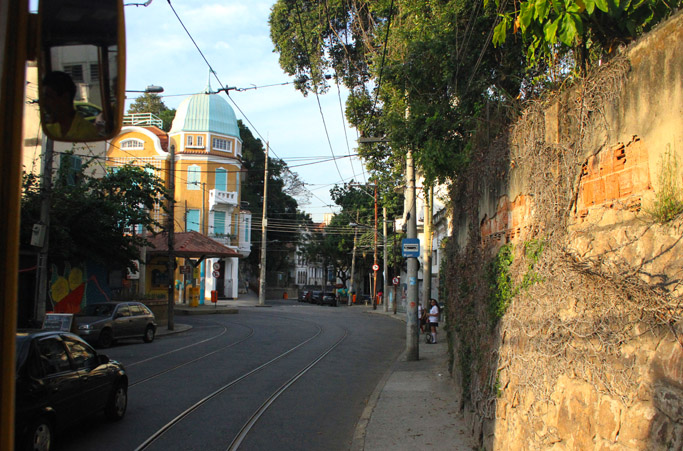
Many of the old houses of Santa Tereza, dating from this same period, give harmony and a special charm to the neighborhood.
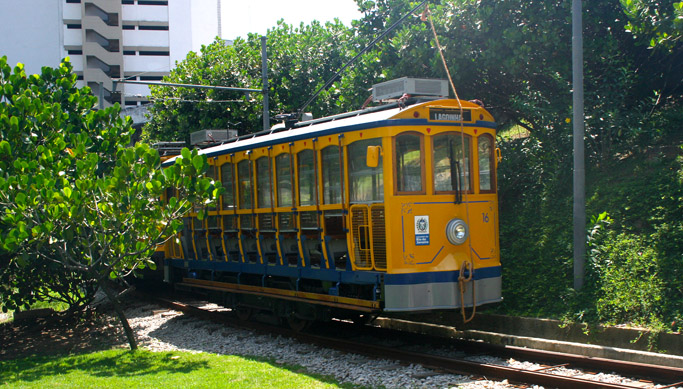
Yellow troles, that snakes through the winding streets of the neighborhood, has been the only line that remained out of the large mesh of trolleys that served Rio in the last century.
Walk through Santa Teresa can reveal, pretty much in every corner, interesting views of the city. Here’s an itinerary well worth checking.
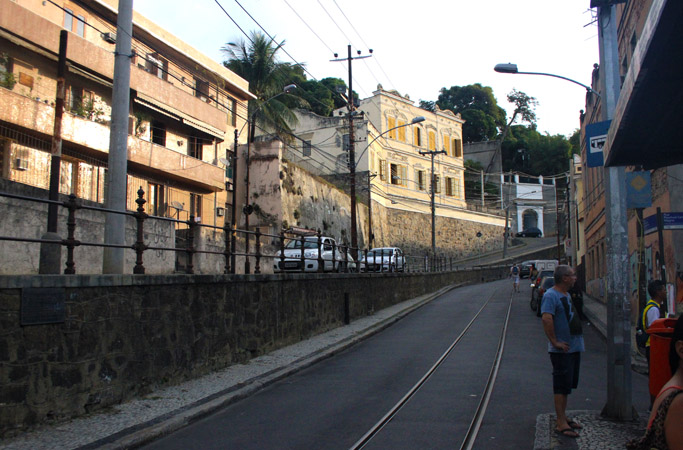
Let’s take the trolley up to Santa Teresa and walk the rest of the path.
HOW TO GET TO THE STATION OF SANTA TERESA TRAM.
To get there, use the Metro line 1 and get off at Cinelandia station. Walk 450m to 2, Lelio Gama Street, downtown, where the Santa Tereza trolley station is. (See on map).
The trolley runs from Monday to Friday from 8:00 am to 5:40 pm, Saturdays from 10:00 pm to 5:40pm, sundays and holidays from 11:00am to 4:40pm.
The ticket costs R$20.00 (about US$6.50) round trip.
After boarding, get off at Largo do Guimarães (1), which is the second stop.
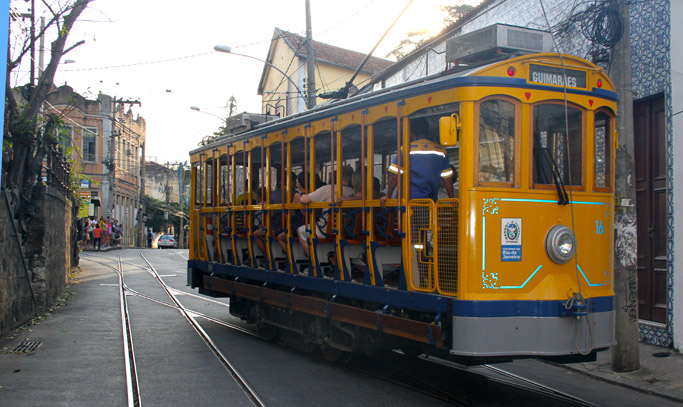
Let’s take a walk through the neighborhood. Follow the red path on the map. The points highlighted and numbered in the text are marked on the map.
From Largo do Guimarães stop (1), go back following the tracks by Almirante Alexandrino Street and, on your left, you will see small galleries of arts and nice craft shops (2).
Click to enlarge the photos.
A little further, some very popular bars and restaurants much atended by locals on weekends: “Bar do Arnaudo”(3), a “Adega do Pimenta”(4) and “Espírito Santa”(5).
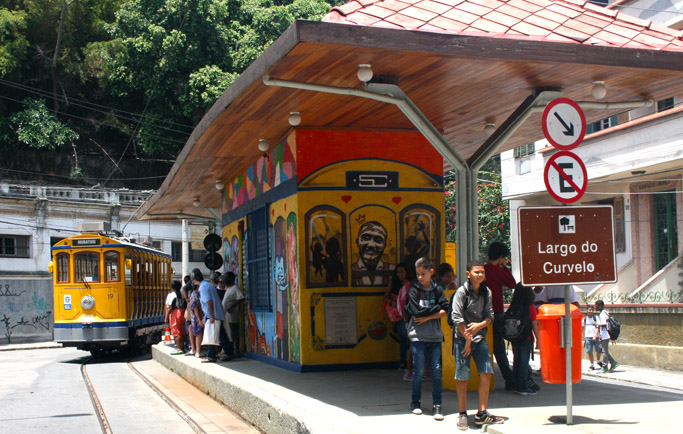
Another 240 meters, we arrive in Curvelo stop (6).
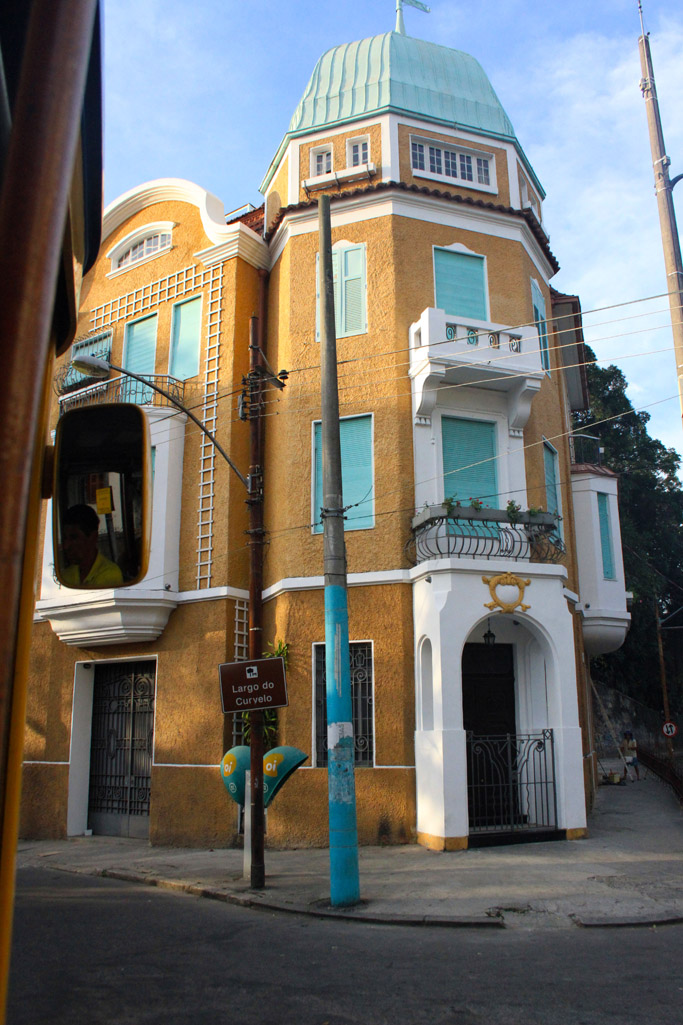
Note the beautiful yellow building next to the stop. Let’s follow the sidewalk ramp that sides the yellow building. Note the buildings on the right, while all have a maximum of 3 flights above street level, most have extra 2 or 3 below street level, as they were built on the hillside.
TWO IMPORTANT CULTURAL SPACES IN SANTA TERESA.
Let’s visit the Ruins Park (7).
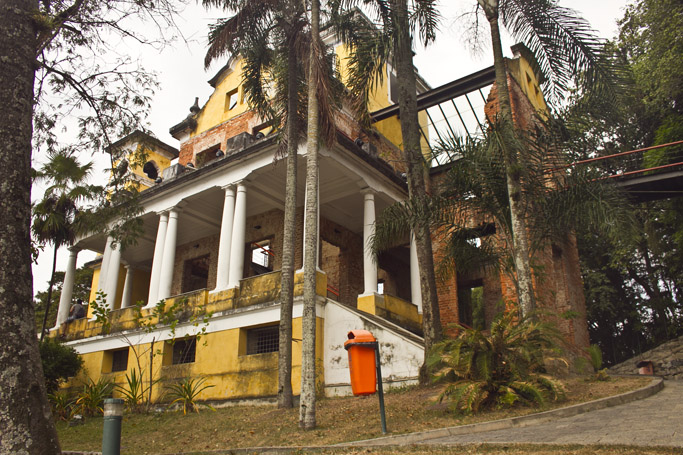
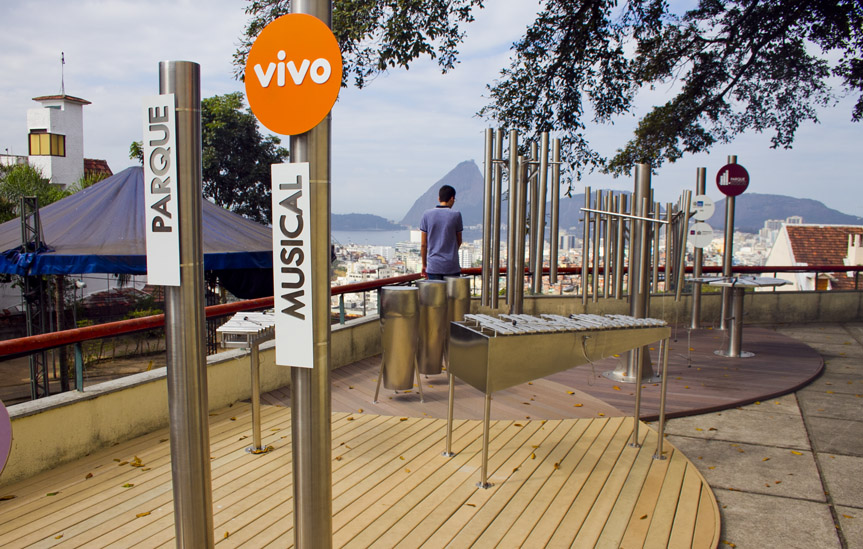
The site was the home of Laurinda Santos Neto, a lady of Rio society, heiress of a rich and powerful family. The mansion was famous for bringing together writers, intellectuals, painters and even presidents at parties offered by the owner of the house.
After the death of Laurinda, the mansion was abandoned, invaded, looted and burned.
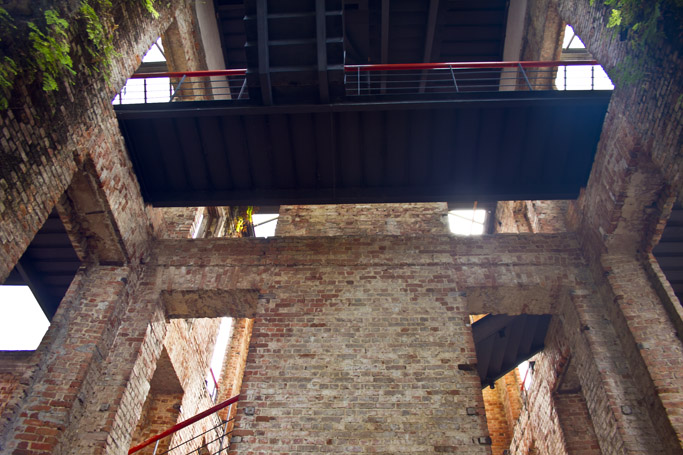
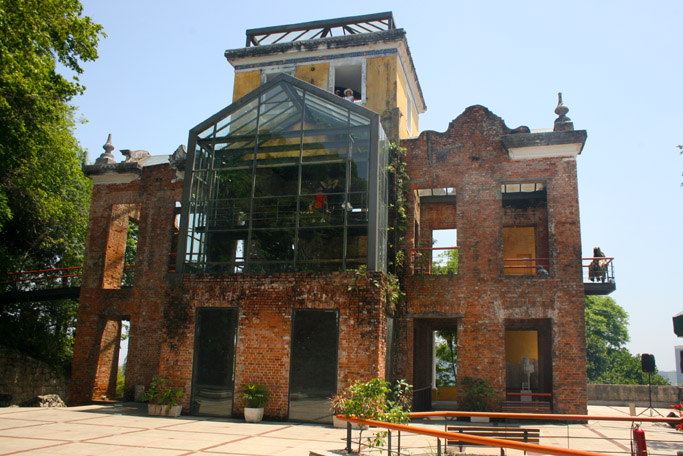
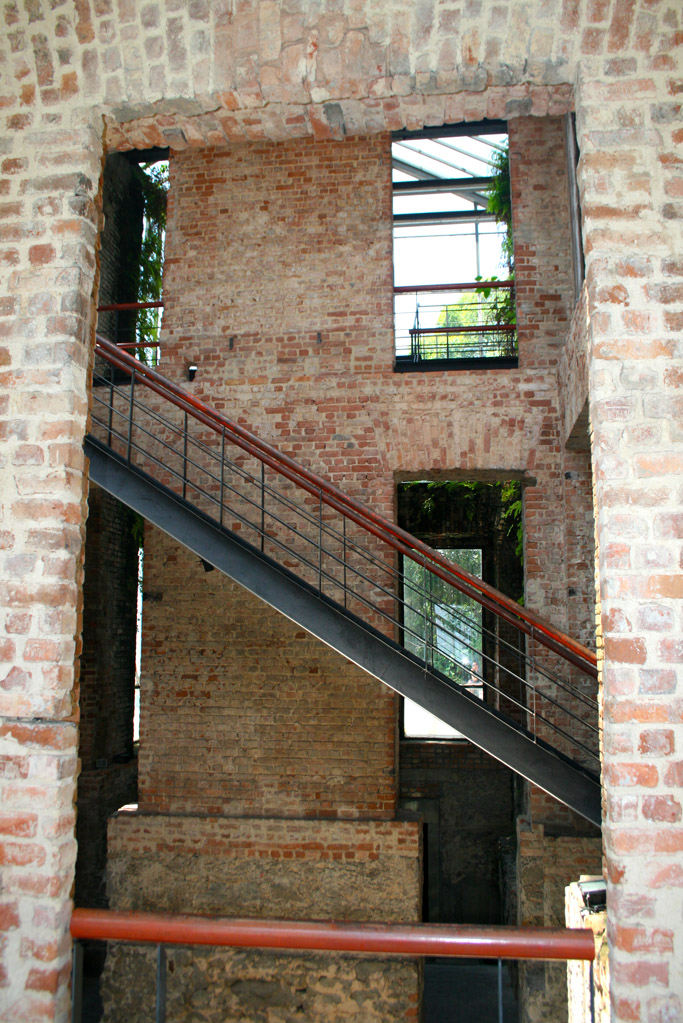
In 1993 the mansion in ruins, was protected by the historical heritage of the city. It was not possible to reconstruct the mansion. So ruins were treated and the place was transformed into a cultural center. On top of the building there is a gazebo with a stunning view of the central area of the city and Guanabara Bay.
Leaving the “Parque das Ruinas”, we will continue to the end of Murtinho Nobre Street which is where the Chácara do Céu Museum(8) sits.
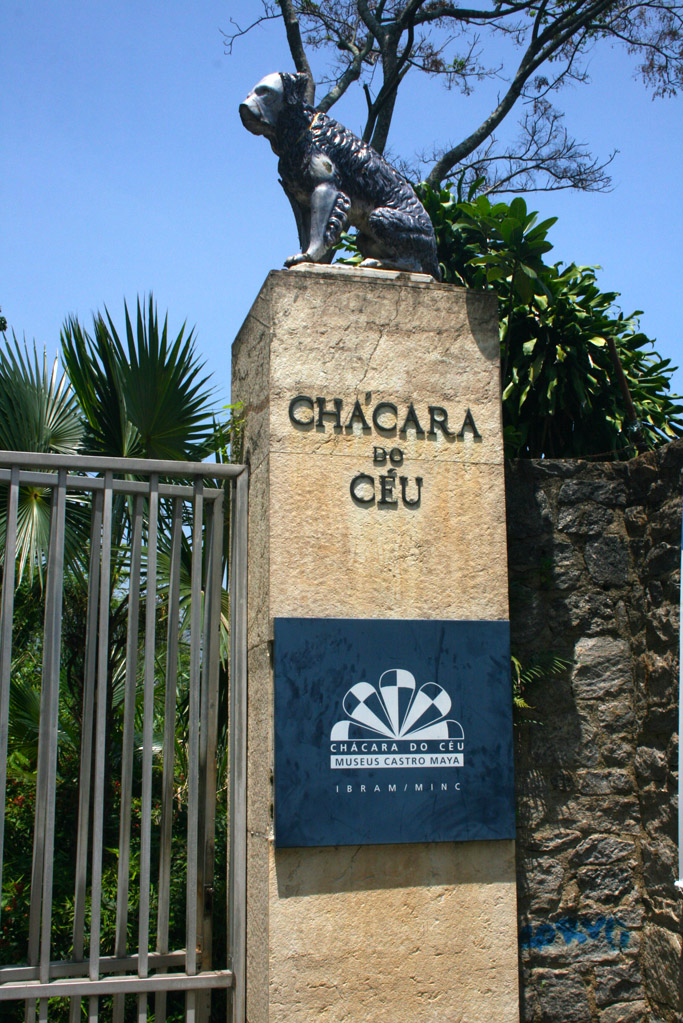
The museum displays art collections from different periods and backgrounds, rare books, furniture and decorative arts, spreaded in a house with three floors. Some rooms still remain with the original decor. It is worth a visit.
DOWN THE STAIRCASE SELARÓN TO LAPA.
Let’s go back to where we came from and now follow the blue route on the map. Scroll down to the Dias Barros Street and turn left at Ladeira de Santa Tereza, note the style of the first old houses on the left side of the street. Continue down, let’s go to the Selarón staircase. The curve approaching we can see the Convent of Santa Tereza (9) on the left.
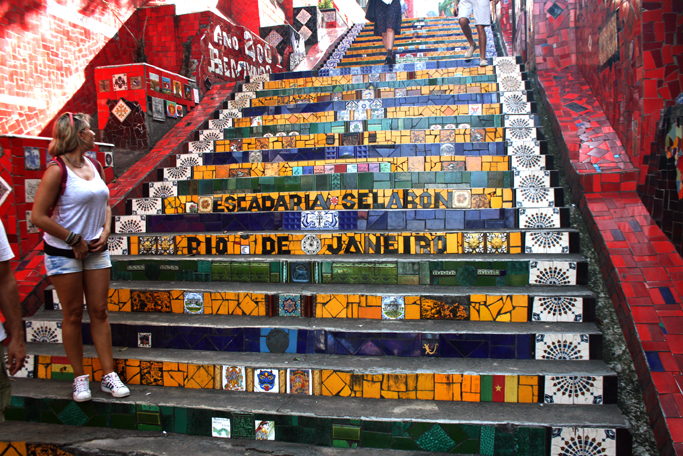
A little to the right, the Selarón staircase (10) with its colorful tiles. (See here for more on Selarón Steps). Let’s go down the stairs to Lapa.
Follow Teotonio Regadas Street, which is directly across the staircase, at the end on the left is Cecilia Meireles Hall (11), which is one of the most traditional concert halls in Brazil. For over 44 years, it was an important area of training and dissemination of concert music in Rio de Janeiro.
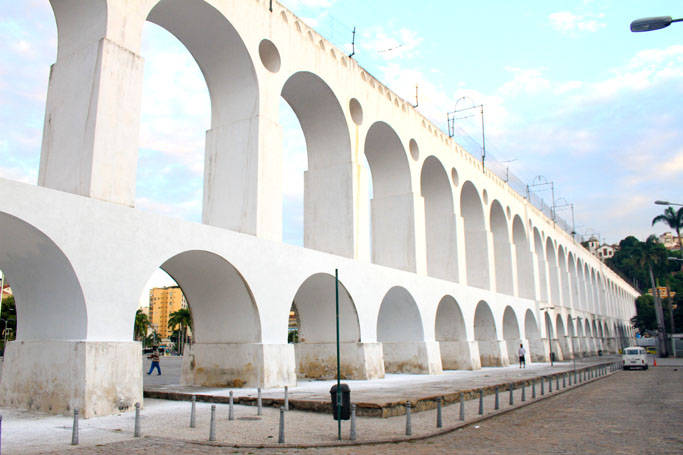
In the background,(still on the left) you can see the Arcos da Lapa (12), the ancient aqueduct that, in the last century, brought the water to a large fountain that was located in Largo da Carioca, downtown.
Here we can end our tour. To return, just proceed to the Cinelandia Metro station (13).
If you want to continue, just walk through the center and discover some very interesting points of Rio de Janeiro. But this is the topic for the next post.

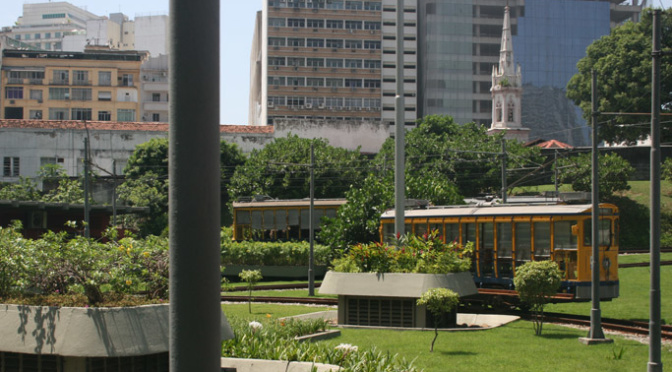
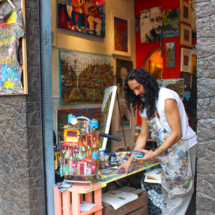
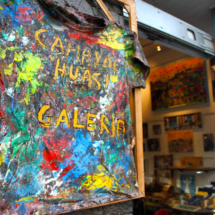
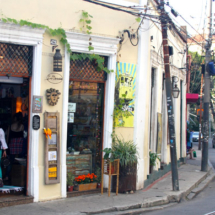

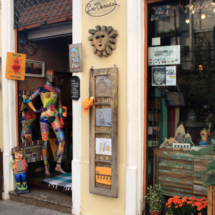
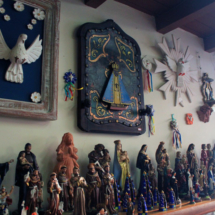
vou seguir exatamente este roteiro, Helio!
Obrigado
Aproveite e, se tiver alguma duvida ou precisar de ajuda, me escreva.
Abraço
A melhor explicação em meio à tantas que procurei na internet. Obrigado, seguirei à risca.
Que bom Celso, fico feliz em poder ajudar. Qualquer duvida, sinta-se a vontade para escrever.
Abraços e aproveite o passeio.
Que post maravilhoso!
Estou organizando meus passeios pelo Rio e não tem na internet um arquivo melhor que esse!. Amei!
Oi Débora,
Fico feliz em saber. Espero estar ajudando outros visitantes. Seja bem vinda ao Rio e aproveite bastante. Se precisar de ajuda, me escreva.
Abraço
Que post maravilhoso! Já salvei aqui kkk.
Dá pra fazer isso tudo numa tarde?
Olá Debora,
Sim dá pra fazer isso tudo numa tarde.
Olá
Gostaria de saber se posso parar no percurso e depois retornar no bondinho utilizando o mesmo bilhete? E quais são os pontos de parada ao longo do percurso?
Att, Marcela
Olá Marcela,
Até agora estão em operação apenas duas estações: Curvello e Largo dos Guimarães. É possível andar à pé entre elas a distância é pequena. A passagem custa R$20,00 e já inclui a volta.
Abraço
A Estação da Carioca de metrô é bem mais próxima e torna o acesso à estação dos bondinhos bem mais fácil.
A Cinelândia é um pouco mais distante.
Temos que preservar essa beleza, por ali passaram pessoas que construíram e preservaram esse lugar lindo, temos que preservar, isso é história que antepassados nos deixaram.
Santa Tereza é tranquilo para turistar? Quais os cuidados com relação a segurança?
Olá jaqueline,
Sim, Santa Tereza é tranquilo para “turistar”. Os pontos que cito no blog, em geral, são mais movimentados aos fins de semana. Durante a semana está mais vazios e, durante o dia são bem tranquilos. Os conselhos que dou com relação a segurança são os comuns a qualquer bairro que você estiver visitando no Rio: Misture-se aos moradores locais, ou seja, não chame muita atenção com roupas extravagantes, câmera pendurada no pescoço, excesso de joias ou bijuterias, bolsas grandes e de marca a tiracolo. Use roupas comuns, do dia a dia, como se estivesse dando uma saída rápida perto de casa. Se for andar pelo calçadão das praias, vá bem a vontade, bermuda ou short, blusa e chinelo. Misture-se e aproveite.
Abraço